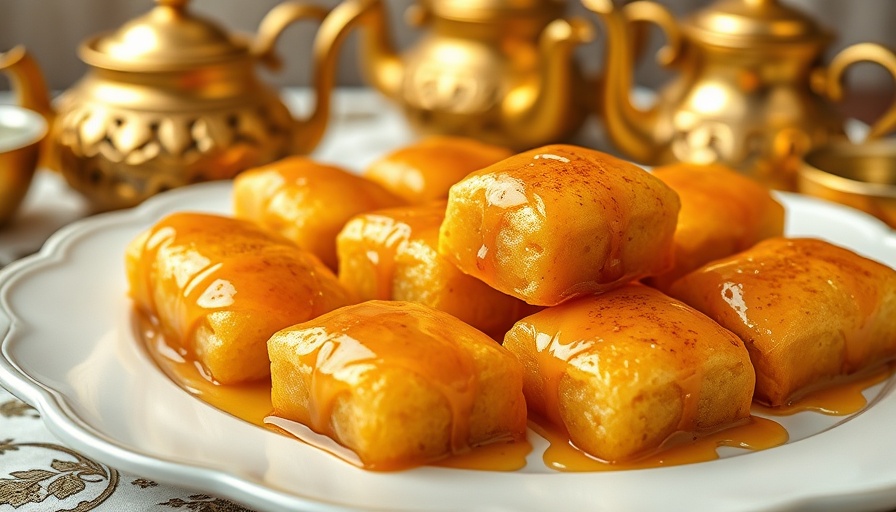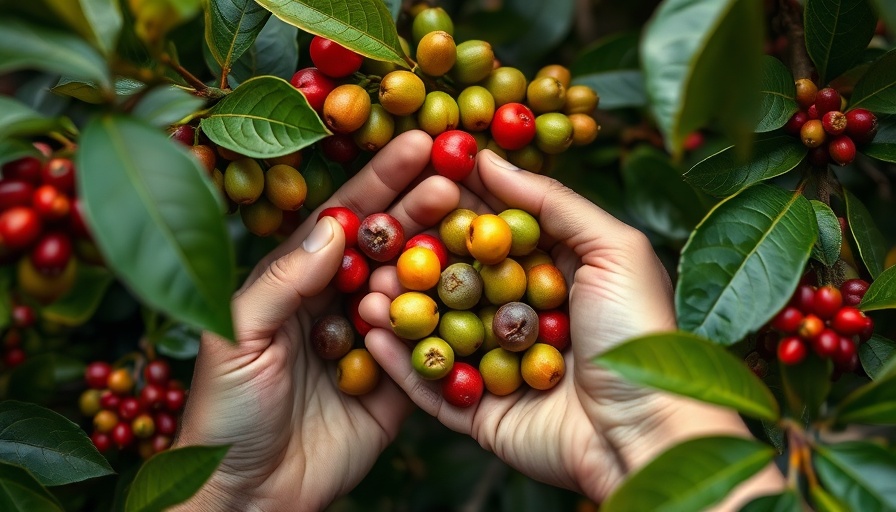
The Sweet Essence of Middle Eastern Culture
In the Middle East, desserts represent more than just indulgence; they serve as a sacred ritual, a staple for festive occasions, and a means of cultural expression. Exchanging sweets after meals or during holidays demonstrates hospitality and connection among friends and family. The ingredients used, including fragrant rosewater and zesty orange blossom, reflect a rich history and a blend of various traditions, making them an essential part of the region's identity.
Baklava: A Universal Favorite
Among the numerous delightful creations, baklava reigns supreme. It is likely the most recognized Middle Eastern dessert, featuring layers of delicate phyllo pastry interspersed with crushed nuts such as pistachios or walnuts, all drenched in a sweet syrup. This beloved confection is synonymous with celebration and has found its place in many cultures, from Turkey to Greece — though its true origins remain hotly debated. No matter where one has savored this sweet, baklava always evokes a sense of shared joy and festivity.
The Allure of Knafeh
Another iconic dessert is knafeh, originating from Nablus in Palestine. This glorious creation combines shredded phyllo dough with sweet cheese and is bathed in a syrup infused with orange blossom. Its contrasting textures of crispiness from the top and the gooey cheese within create a unique experience that enchants every palate. Knafeh is often enjoyed during celebrations and gatherings, symbolizing togetherness.
Confections Passed Down: A Cultural Heritage
Many Middle Eastern desserts rely on family recipes, often passed down through generations. Traditional sweets are integral during Ramadan and Eid, where intricate desserts like maamoul and basbousa make an appearance. Maamoul, filled with dates or nuts, signifies the joy of giving, while basbousa, a semolina cake topped with almonds and soaked in syrup, provides a comforting conclusion to any meal.
Exploring Taste: A Global Journey
Travelers venturing to the Middle East will discover that tasting local desserts is a passport to understanding the culture. From the vibrant streets of Marrakech to the lavish halls of Dubai, sweets are a feature that unites people across borders. For the adventurous traveler, indulging in local desserts often leads to connecting with local communities and gaining insights into their traditions. For instance, those visiting Lebanon can delight in halawi jibbneh, a cheese-based sweet that displays the region's love for both savory and sweet elements.
Why Desserts Matter: A Symbol of Happiness and Hospitality
Understanding the significance of these desserts goes beyond just enjoying their flavors. They tell stories of cultural identity, symbolize happiness during gatherings, and reveal the importance of hospitality in the Middle East. For travelers, partaking in the region’s sweets provides more than mere enjoyment; it fosters connections with locals and enriches one’s travel experience, thus creating lasting memories.
Embark on Your Sweet Adventure
As you plan your next adventure, consider including the Middle East on your itinerary. The rich array of unique desserts offers not only a delicious treat but also a glimpse into the heart of Arab culture. Whether through sampling local desserts or even trying your hand at making them during a cooking class, you’ll find that the sweet journey is just as rewarding as the destinations themselves.
 Add Row
Add Row  Add
Add 




Write A Comment